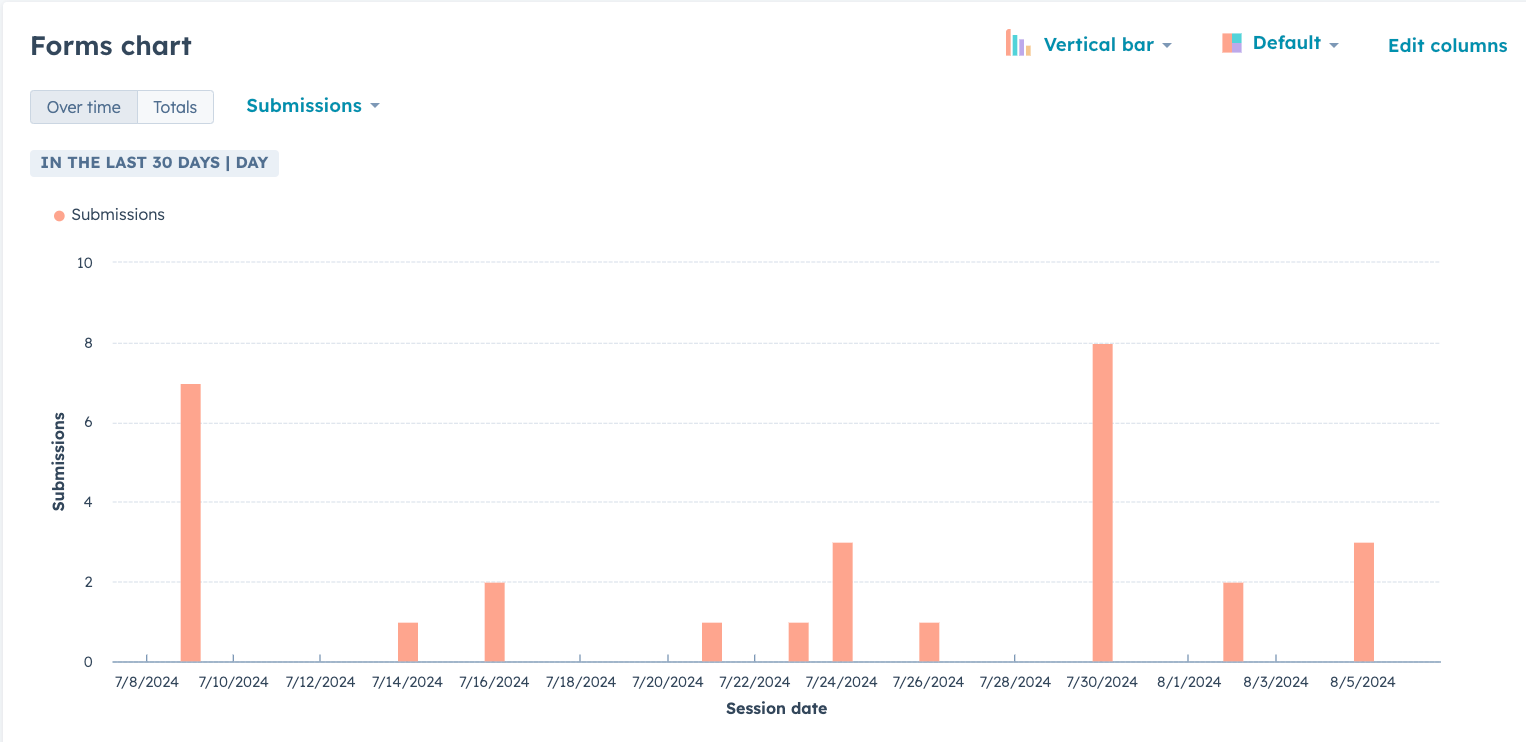- Knowledge Base
- Reporting & Data
- Reports
- Use marketing reports in the marketing analytics suite
Use marketing reports in the marketing analytics suite
Last updated: January 29, 2025
Available with any of the following subscriptions, except where noted:
-
Marketing Hub Professional, Enterprise
Use marketing analytics reports to analyze what channels are driving the most engagement, how your website is performing, and contact insights.
Once you've customized a report, you can save the report or add it to a dashboard.
View, select, and save a marketing report
- In your HubSpot account, navigate to Reporting > Reports.
- In the left sidebar menu, click Marketing.
- Select a Quick answer to go to the most relevant report that answers your questions.

- Or, to view all of the reports related to a topic area, in the left side panel, click the topic you want to analyze.
- Select the report you want to work with. Learn more about these reports below.
- A preview of the report is shown in the center panel.
- To read more about the type of report you've selected, including its description and the properties it uses, navigate to the About this report tab in the right panel.
- To filter your data, use the dropdown menus on the Filters tab in the right panel. This varies depending on the report you selected, but they include:
- Date range by: filters the records that are within this date, based on their property values. The date property used is stated.
- Group by: segments the records based on their owners or their owners' teams.
- Select reps: filters the records based on their owners.
- Select teams: filters the records based on their owners' teams.
- Pipeline: filters the records based on their deal pipeline.
- To add additional filters to the report, click add Add filter and select your filter criteria.

- To share the customized report with other users, click the Actions dropdown menu in the center panel and select Copy report URL. You can share this report with all users who have access to sales reports.
- Once you've customized the report, click Save report to save this to your reports list or add it to a dashboard.
Types of marketing reports
Advanced reporting
Attribution (Marketing Hub Enterprise only)
In the Summary section, view top-level attribution metrics including:
- Associated deal value
- Closed won deals
- Average deal size
- Average interactions per deal
- Sum first interaction
- Sum last interaction
- Sum full path
- Sum U-shaped
- Sum W-shaped
- Sum time decay
Learn more about attribution reporting in HubSpot.
In the Revenue Attribution chart, view which assets are attributed with revenue. You can view the data in the table below the chart. Use the filters in the right panel to refine the data your can see in the chart.

To filter your data, use the dropdown menus on the Filters tab in the right panel. You can view your attribution models across various dimensions, including:
- Asset title: filters the report by the titles of your assets. When an asset doesn't have a title, the URL of the asset will be displayed.
- Asset type: filters the report by specific types of assets, like marketing email or blog. Learn more here.
- Interaction type: filters the report by the type of interaction that occurred along a contact’s journey, like marketing email click or page visit.
- Interaction source: filters the report by the origin or source of the interaction.
- Campaign: filters the report by the HubSpot Campaign that the asset or interaction is associated with.
- Closed date: filters the report by the close date of the deal.
Customer journey analytics (Marketing and Sales Hub Professional and Enterprise only)
- In the top bar, navigate to a customer journey analytics template. Types of reports include:
- Lifecycle stage progression: measures the conversion rates between stages in the journey. This report includes Lead, MQL, SQL, and Customer. The two middle stages are set to optional as default.
- Pages visits that led to form submissions: measures the five most-visited pages in the time frame. Then, measures how many contacts went on to submit a form.
- Lead creation by ad network: breaks down ad interactions by ad network (Facebook, Google, and LinkedIn). Then, measures how many of these contacts become a Lead.
- Meetings that generated deal: breaks down meetings attended by the meeting owner. Then, measures how many of these contacts who attended a meeting went on to have a deal created.

- In the Summary section view the below for each report:
- Total conversion
- Cumulative conversion
- Average time to complete journey
- Average time between steps
Learn more about customer journey analytics.
Channel performance
- Ads: this report shows which ad networks drive the most engagements.
- Forms: this report shows which forms are capturing the most lead information.
- Marketing email: this report shows which emails are generating the highest engagement rates.
- SMS: this report shows SMS performance, including sending, delivery, and click through rate.
- CTA: this report shows which CTAs are performing the best in relation to views and clicks.

Web traffic analysis
Analyze how your website is performing, including what web sources are driving the most traffic to your website, what browsers your website visitors are using, what countries your website visitors are coming from and more.
Learn more about analyzing your site traffic.
Contact insights
- Count of contacts: this report shows the number of contacts in the account.
- Contacts chart: this report shows which sources create the most contacts in your CRM. See which countries and sources are driving the most conversions.
